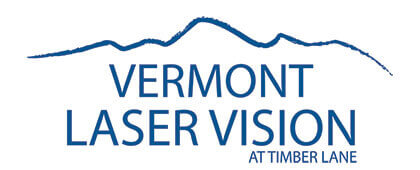Common Symptoms During Recovery:
- It is common to experience varying degrees of discomfort beginning 30-90 minutes following the surgery as the numbing drops begin to wear off. Many patients describe this sensation as feeling like sand or an eyelash is in the eye. This rarely lasts beyond the surgery day and is a normal part of the healing process. Resting with your eyes closed as much as possible the balance of the day of surgery is best. Listening to the radio or a book on tape will help pass the time.

Dr. McCormick will place protective shields over your eyes after the surgery. It is best to go home, close both eyes and rest for the remainder of the day following the LASIK procedure. Keeping your eyes closed will minimize the discomfort and speed your visual recovery. Be careful not to squeeze your eyelids tightly closed because this could cause the flap to become dislodged. Keep the shields on until the next day. We will remove them at your one day postoperative visit and ask you to wear them while sleeping the next 5 nights so that you don’t accidentally bump or rub your eye while asleep.
- You may experience watery eyes, a runny nose, light sensitivity and eye redness during the first few days following your surgery. This is generally mild and not unusual.
- Some patient’s eyes and eyelids may feel tender or bruised in the first couple weeks after surgery. This can be caused by the pressure of the lid holder or suction ring used during treatment. It will clear by itself with time.
- It is common for the small blood vessels in the white of your eye to leak slightly because of the suction ring utilized during the creation of the corneal flap. These Subconjunctival Hemorrhages result in small red areas on the white part of your eye. They are expected and though alarming, are harmless and have no effect on your vision. Do not worry; they will slowly clear away within 4 to 6 weeks.
- It is normal for your vision to go in and out of focus, particularly in the first week following your surgery. Although visual recovery is slower for some patients, vision should stabilize substantially by the second week after the procedure. Patients who were nearsighted before surgery tend to see their vision stabilize more quickly than those who were farsighted.
- Expect your distance vision to clear before your near range vision. This is normal. However, if you are over 40, your age will determine when and if your reading vision will return. Patients over 45 years of age usually will need reading glasses, even if a monovision correction has been chosen.
- Nearly all patients have a temporary dry eye after LASIK. This will persist for 2 to 6 months following the surgery and is best treated with frequent artificial tear use. When the corneal flap is created, some of the nerves in the cornea are cut which decreases normal corneal sensitivity. It is the ever so subtle sensation of dryness that stimulates us to tear and blink. Since you will not have normal sensation right after surgery, you will not tear or blink normally. Although your eyes may not feel dry, regular artificial tear use is advised. Within a month or so after surgery, new nerves are growing into the treated portion of the cornea and you begin to regain normal sensation, tearing and blinking. When this occurs, you’ll start to need your artificial tear less frequently.
- Night glare, commonly described as halos or starbursting, is often reported during the first few weeks following surgery and is related to the normal post-operative swelling of your corneas. This gradually decreases so that it bothers very few patients by 1 month and even fewer by 6 months after surgery.
- Displacement of the flap is very rare but is a serious problem that can arise following the LASIK procedure. This generally occurs during the first 24 hours after surgery and causes pain, redness and blurred vision. It is important to be evaluated whenever you feel your eye is not healing appropriately or you have pain or a sudden change in your vision.
 Post-Procedure Activities And Restrictions:
Post-Procedure Activities And Restrictions:
- Read, use the computer and watch TV in moderation for the first few days after surgery. Concentrated visual acuity decreases blinking causing your eyes to become dry and vision to become unstable.
- Showers and baths are fine, but try to keep your eyes gently closed and avoid getting water or soap directly in your eyes for 5 days. When drying off, do not directly rub or bump your eye. If you have any crustiness on your lashes from the artificial tears, they are best cleaned with careful use of a clean washcloth soaked in warm water.
- Do not go swimming, use a hot tub, spa or whirlpool for at least 10 days to reduce the risk of infection.
- Resume driving only when advised by your doctor and when you feel confident and safe.
- Most people can return to work with a light workload after their one day post-op visit.
- Do not use eye makeup, colognes or aftershave for 5 days. Do not use mascara for 2 weeks. Use care when removing makeup, avoiding rubbing your eyelids aggressively. A magnifying mirror will make it easier to apply your makeup. Using fresh mascara or liquid eyeliner after surgery will reduce the risk of infection from the product being contaminated.
- Wear sunglasses for comfort as needed. You may be slightly more light sensitive than normal in the first couple weeks after surgery.
- Avoid dirty, dusty and smoky environments for 1 week. Should you get something in your eye, your first reflex might be to rub the eye which we don’t want you to be doing.
- Remember that you should wear safety glasses if you are doing anything during which you might get hit in the eye, poked in the eye or have anything splash in your eye after surgery. Industrial grade, wrap-around safety glasses may be obtained at a hardware store or home center.
- Most patients can return to their normal exercise routine after 1 to 2 days. Wear a headband to keep sweat out of your eyes. Avoid contact sports for at least one month after surgery. When resuming contact sports, wear protective goggles.
- Do not rigorously rub your eye for 1 to 2 months after the surgery.
- Do not wear a contact lens in your eye after LASIK unless it has been approved by your doctor.
- Use recommended artificial tears on a regular basis during the first month after surgery even if you do not feel as though you need them.
- Never hesitate to call with any questions that you might have about your procedure, before or after your surgery.


 Post-Procedure Activities And Restrictions:
Post-Procedure Activities And Restrictions: